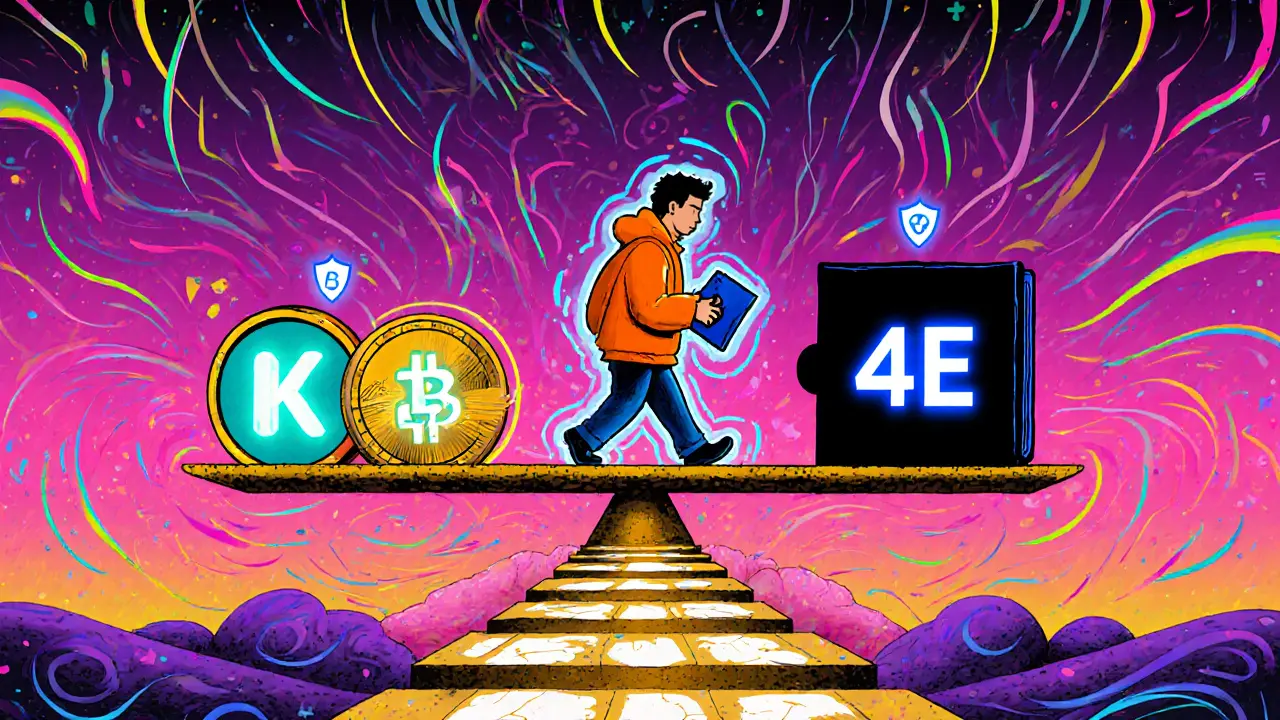When you type 4E crypto exchange into a search engine, the results are strangely empty. No major review site, no regulatory filing, no community chatter. That silence should raise a flag before you even think about depositing a single cent.
What We (Don’t) Know About 4E Crypto Exchange
4E Crypto Exchange is an unnamed platform that appears in a handful of obscure forum posts but lacks any verifiable public record. No domain registration date, no audited financials, and no listing on reputable aggregators like CoinGecko or CoinMarketCap. The absence of data makes a conventional review impossible, so the best we can do is outline the gaps and explain why they matter.
Red Flags to Spot on Any Unknown Exchange
- Missing or hidden company registration - legitimate platforms disclose the legal entity, jurisdiction, and registration number.
- No proof‑of‑reserves or audit reports - without a third‑party audit you can’t confirm that user funds are actually held.
- Weak or nonexistent security claims - look for details on cold storage, multi‑sig wallets, and bug bounty programs.
- Unclear fee structure - a transparent schedule (maker/taker, withdrawal, deposit) is a baseline expectation.
- Absence from regulatory databases - check the Financial Conduct Authority (UK), FinCEN (US), or the New Zealand Financial Markets Authority.
These markers appear on every reputable exchange, from Kraken to Coinbase. If a platform like 4E Crypto Exchange can’t provide them, treat it with extreme caution.
Due‑Diligence Checklist for New Platforms
- Verify the legal entity: search the jurisdiction’s company register for the exact name.
- Confirm security audits: look for reports from firms such as CertiK, Quantstamp, or Trail of Bits.
- Check proof‑of‑reserves: reputable exchanges publish Merkle‑tree snapshots.
- Read the terms of service: hidden clauses can allow unilateral fund freezes.
- Search for community feedback: Reddit, Bitcointalk, and Trustpilot often surface early warnings.
- Inspect the fee schedule: compare maker/taker rates against industry averages (0‑0.2% is common for spot trading).
- Look for regulatory compliance: a licence number from a recognized authority is a strong sign.
If any step fails, walk away. It’s better to lose a potential opportunity than to lose real money.
Comparison of Established Exchanges vs. 4E Crypto Exchange
| Exchange | Regulation | Proof‑of‑Reserves | Security Audits | Supported Coins | Typical Fees (Spot) |
|---|---|---|---|---|---|
| Kraken | USA (FinCEN), EU (MiCA pending) | Quarterly Merkle proofs published | CertiK, Trail of Bits | 400+ | 0.16% maker / 0.26% taker |
| Coinbase | USA (NYDFS), UK (FCA) | Annual audit, not public proof‑of‑reserves | Internal security team, external audits | 250+ | 0% maker / 0.50% taker |
| MEXC | Singapore (SFC), limited | No public proof‑of‑reserves | Basic internal review | 2,500+ | 0% maker / 0.20% taker |
| 4E Crypto Exchange | Not disclosed | Not disclosed | Not disclosed | Unknown | Unknown |
The bottom row shows exactly what’s missing for 4E. Every other column is either “Not disclosed” or “Unknown.” That absence alone is a strong deterrent.
How to Verify Legitimacy When Information Is Sparse
Even if a platform hides its details, you can still run basic checks:
- Run a WHOIS lookup on the domain. Fresh registrations (< 30 days) often signal a launch without a track record.
- Inspect SSL certificates. A mismatch between the domain name and the organization name may indicate a generic hosting service.
- Search the name in the Anti‑Phishing Working Group incident reports. In Q2 2025 the group logged 1,247 crypto‑phishing attempts, many using look‑alike names.
- Check the Blockchain Transparency Institute database for any mention of 4E. As of October 2025, there is none.
If every test comes up empty, treat the platform as unverified.
Safe Alternatives You Can Trust Today
Instead of gambling on an unknown service, consider one of the following proven exchanges. All have robust security, clear regulatory status, and transparent fee schedules.
- Kraken - solid security record (no major hacks since 2011), offers proof‑of‑reserves, and supports fiat deposits in over 20 currencies.
- Coinbase - best for beginners, fully regulated in the US and UK, and provides insurance on custodial assets.
- Binance - the biggest trading volume, a broad coin list, and a Tier‑1 security audit from CertiK.
- MEXC - zero‑fee makers, ideal for high‑frequency traders, though regulation is lighter.
- OKX - strong derivatives offering, with a “Proof‑of‑Reserves” page updated monthly.
Pick the one that matches your trading style and jurisdiction, then apply the due‑diligence checklist above.

Final Verdict on 4E Crypto Exchange
Because there is no public data, no regulatory footprint, and no third‑party audits, 4E Crypto Exchange cannot be classified as a trustworthy platform. The safest move is to avoid depositing funds until verifiable information appears - and even then, proceed with a small test amount first.
Key Takeaways
- 4E Crypto Exchange lacks any verifiable public record as of October 2025.
- Missing regulatory, audit, and fee details are major red flags.
- Use a systematic due‑diligence checklist before trusting any new exchange.
- Established exchanges like Kraken, Coinbase, and Binance provide transparent security and compliance.
- When in doubt, keep your crypto on reputable platforms or hardware wallets.
Frequently Asked Questions
Is 4E Crypto Exchange a scam?
There is no concrete evidence that 4E is a scam, but the complete lack of regulatory registration, audit reports, and community presence makes it highly risky. Until verifiable information surfaces, treating it as potentially fraudulent is prudent.
How can I check if an exchange is regulated?
Search the regulator’s licence database (e.g., FinCEN, FCA, MAS). A legitimate exchange will list its licence number, jurisdiction, and often a link to the regulator’s public record.
What is a proof‑of‑reserves report?
It’s a cryptographic snapshot proving the exchange holds enough assets to cover all user balances. The report is typically generated using a Merkle tree and signed by an independent auditor.
Can I trust an exchange that has no fees listed?
Hidden fees are common. A reputable platform always publishes a clear fee schedule for deposits, withdrawals, and trading. If fees are missing, ask customer support for details before using the service.
What should I do if I’ve already sent funds to a dubious exchange?
Contact the exchange’s support immediately. If there’s no response, consider filing a report with your local financial authority and, if possible, with the blockchain’s tracing service to attempt recovery. Unfortunately, crypto transactions are irreversible, so prevention is the best protection.

Write a comment